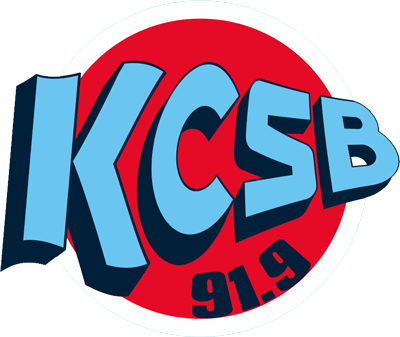Down the O’Rourke Rabbit Hole
Our Assistant Music Director, Liam Hogan, takes KCSB on a voyage through American instrumental master Jim O’Rourke’s discography. Keep reading for Liam’s recommendations, reviews, and guidance on how and where to get started.
Words by: Liam Hogan
Jim O’Rourke is one of those names I heard a thousand times before I heard a note of his music. Whispers first appeared as I obsessed over Sonic Youth, but he had joined immediately before the release of one of their most critically panned records, so I moved on. Again, when diving deeper into the indie landmark that is Wilco’s Yankee Hotel Foxtrot, I heard his name pop up. I soon learned he had even released a series of critically beloved albums under the Drag City label, but, yet again, I pushed it aside. It wasn’t until I saw his name again when diving into the history of avant-garde and experimental music, particularly in drone and free improvisation, that I began to take notice. Was this really somehow the same man who had produced an album that won Wilco a Grammy? Wait, he mixed Joanna Newsom’s Ys? Okay, fine.

Photo: Bandcamp – Insignificance by Jim O’Rourke
As is often the case at the start of any project, my recollection of the chronology of events is a bit hazy, but early in my “Jim investigation” I stumbled on a fantastic interview he did with Joshua Minsoo Kim of Tone Glow (for my money one of the best experimental/avant-garde music blogs currently active). Besides being a great starting point for understanding the various phases of his career, it’s also just a really fun read. Loosely based on those Pitchfork 5-10-15-20 interviews, the structure – along with Minsoo Kim’s decided interest in his more un-sung works – led to a goldmine of incredible anecdotes that I wouldn’t dream of spoiling here. At one point, Jim happened to mention a special fondness for his album that was soon to be released at the time of recording, which after a little searching I found under the name Shutting Down Here. Released in 2020 by the label “GRM Portraits,” it is billed as a monumental work spanning decades of O’Rourke’s career, and can be best described as somewhere between electroacoustic, drone, and minimalist music, intricately weaving together elements from these genres and beyond. Seriously, I cannot praise this album highly enough. It almost immediately sold me on Jim as a generational talent and was one of the first electroacoustic pieces I ever heard that opened my eyes to the appeal of the genre as a whole. From here, I was hooked.
In retrospect, Shutting Down Here was a somewhat unusual introduction to the world of Jim O’Rourke. Continuing my research, I quickly rediscovered those Drag City albums I had seen in passing so many times. These five records are easily his most critically acknowledged and praised works, but based on the two or three sentences he gave them in the Tone Glow interview, he seems to view them as somewhat of an albatross around his neck (“Don’t ask me anything about Eureka (laughter)”). Still, if I wanted to get a proper picture of his career, I needed to check these out. These records have been talked to death since he began his monumental Drag City run with 1997’s Bad Timing, so I’ll keep this section brief, but these albums absolutely live up to the hype and then some. Starting with the aforementioned Bad Timing, O’Rourke mixes top-notch American primitivist guitar stylings with accents from his background in drone and chamber music, which for someone who befriended and collaborated with John Fahey in the 90’s makes a whole lot of sense (there’s an awesome Fahey anecdote in that Tone Glow interview. Seriously, check it out).
The next album is the dreaded Eureka, and you will immediately understand on first listen why he’s been asked to death about it. The opener “Women of the World,” a reimagining of an Ivor Cutler song of the same name, completely floored me on first listen, growing from the picky acoustic guitar textures that dominated Bad Timing into the full band sound that comes to define the rest of the record, while Jim repeats the same simple refrain for almost nine minutes, adding layers of harmony and density with every repetition. Shockingly, the rest of the record somehow lives up to the incredibly lofty standard this opening track sets. While the whole thing is worth a listen, I particularly want to highlight the title track, another 9-minute odyssey, this one completely different from the opener. Layers of glitchy, beepy electronics combine with horns and swelling synths for one of the most moving textural experiences I’ve ever had with music. In the middle, the electronics drop away, and Jim’s voice emerges from what sounds like a distant radio signal to deliver a beautiful and spare verse over simply picked guitar. What follows is an outro that defies description, and if you listen to nothing else I discuss here, let it be this.
I know I said this would be quick, so I hope you don’t mind my gushing there for a bit. Since there’s still so much to cover, I’ll leave Insignificance, The Visitor, and Simple Songs as an exercise for the reader. All are good to great, with Insignificance dipping into a more traditional rock sound accompanied by fascinatingly grisly lyrics, The Visitor pulling together pieces from the previous three records into what might be my favorite Drag City release, and Simple Songs does exactly what it says on the tin to a degree that feels almost tongue-in-cheek but delivers quality material nonetheless.
After finishing the Drag City albums, one MIGHT feel they know what Jim’s about, but a quick visit to Discogs reveals a truly staggering 199 albums bearing his name, either as solo releases or within collaborative efforts. This is when I really started thinking about what I took on when I said I’d write a “quick blog” about exploring his discography. That number doesn’t even include albums he mixed or produced, which make up a significant chunk of his output.
There’s obviously still a lot to get through, so I’m going to split the rest of his catalog into a few broad chunks and offer a couple of potential places to get started. First, I wanted to look at important albums that he produced, mixed, or engineered. On the more approachable side of things, we have the aforementioned Wilco albums Yankee Hotel Foxtrot and A Ghost is Born, both of which are incredible and fully live up to their respective praise. As a side note, if you like the duo of Tweedy and O’Rourke a whole lot, check out their collaborative project Loose Fur. He also handled production for a few Smog albums, including the fantastic Red Apple Falls and Knock Knock, both of them alt-country/indie rock essentials by the incomparable Bill Callahan. As I mentioned at the start, he also mixed two Joanna Newson records, Ys and Have One On Me, which are two of her most well-regarded releases, and almost required listening if you haven’t gotten around to them already. Additionally, he’s been involved in the production of countless experimental and avant-garde releases which make up the majority of his catalog, but so far in my exploration I can only personally recommend his work with Chicago experimental rockers Storm and Stress on their album Under Thunder and Fluorescent Lights as well as his production on the fantastic late-career John Fahey album Womblife.
In front of the mixing board, Jim has also made instrumental contributions to many legendary acts. Starting with his tenure in Sonic Youth, upon returning to that universally panned album NYC Ghosts and Flowers I found a lot to love, and it’s quickly grown to become one of my all-time favorite SY records. It finds the band tying in more free improvisation and spoken word ideas, aided by Jim on electronics and bass. Simultaneously, he was also making important contributions to Stereolab, lending a bevy of instruments as well as production to Cobra and Phases Group Play Voltage in the Milky Night and Sound-Dust. As these are two personal favorites of mine in the Stereolab catalog, it was exciting to learn of yet another long-beloved album that O’Rourke had a behind-the-scenes hand in. On the more experimental side of things, he played on multiple albums by the incredible (and still underrated) Gastr Del Sol, including their mind-bending masterpiece Camoufleur. He has also contributed to an ever-growing number of collaborative efforts with important contemporary musicians, including Christian Fennesz, Oren Ambarchi, and Eiko Ishibashi.
Finally, I wanted to quickly cover a few highlights of his solo experimental output that I discovered while researching for this article. In a similar vein to the colossal Shutting Down Here, Sleep Like It’s Winter combines elements of ambient, drone, and electroacoustic music to create an appropriately frigid yet enticing atmosphere. For a more electronic/glitch oriented experience, check out jim:computer:hotel, an underrated album in his discography that creates intricate and layered soundscapes I feel I could live in for years. It makes sense considering the enormity of his output that I’m only just mentioning this now, but in recent years Jim has used the “Steamroom” alias on Bandcamp to release random experiments, reissues of older material, and sketches for future works. There are 61 Steamroom projects at the time of writing, so cataloging those alone would be a monumental task, but I can highly recommend Steamroom 23 and 47. Steamroom 23 is, in fact, the name for the Bandcamp re-release of his drone and avant-folk album Happy Days. Originally released in 1997, it simultaneously evokes Pauline Oliveros and Phil Niblock, along with a host of other artists he names in the original notes, available on the Bandcamp page. Steamroom 47 is heavily discussed in the Tone Glow interview, so I’ll leave the detailed explanation to Jim himself over there, but it offers a hauntingly gorgeous and delicate experience, with almost random-seeming piano floating over stretched-out chords and electronic textures.
I’ll freely admit that that was a lot. I don’t expect everyone to listen to everything here, and if I’ve learned anything from writing this it’s that fully understanding the catalog of Jim O’Rourke is the work of a lifetime. But I do hope that at least one album I’ve mentioned here jumped out at you and you decide to give it a chance. You really can’t go wrong with this guy.
